During the 2nd century AD, the Greek astronomer Ptolemy published a catalogue of 1,022 stars, which he divided into 48 constellations. In the 17th and 18th centuries, astronomers actively added to this list, devising new star patterns to commemorate a variety of monarchs, emperors, patrons, animals, tools and instruments.
The result was that there was no standard set of constellations: those shown in one star atlas frequently differed to those depicted in another, and it became clear that something had to be done to bring order to the chaos.
More history of astronomy with 7 telescopes that changed astronomy, How Galileo changed the way we look at the Universe and A history of Chinese astronomy
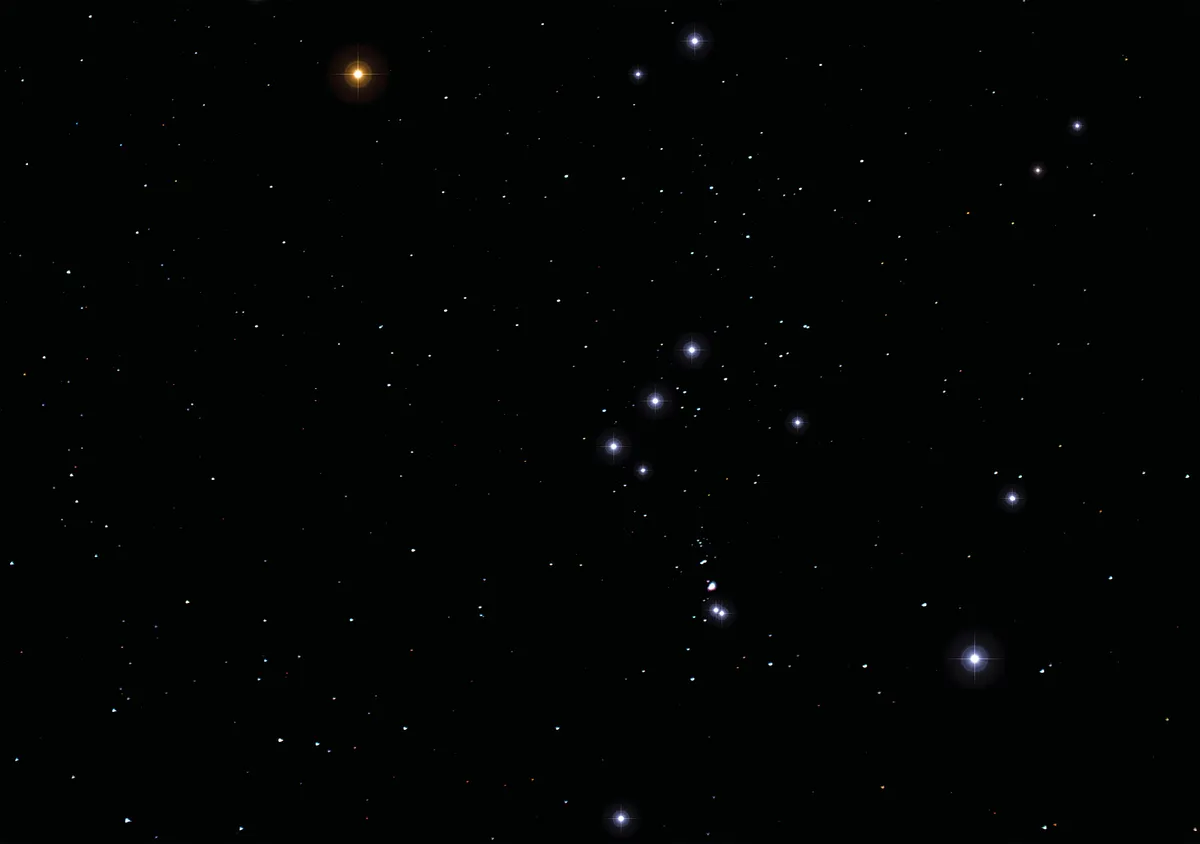
That happened in 1922, when the International Astronomical Union drew up an official list of 88 constellations.It included those drawn up by Ptolemy, but discarded many of those devised since.
Straight-edged boundaries following the lines of right ascension and declination were set out, and each constellation eventually took the form of a recognisable pattern of stars contained within a standardised area of sky.
It is this internationally agreed set of constellations that grace the pages of modern star charts. But what of those that fell by the wayside?
Here we remember a few that didn’t make the cut.
Discover which constellations are visible all year round in our guide to circumpolar constellations.
8 forgotten constellations
Argo Navis / The Ship, Argo
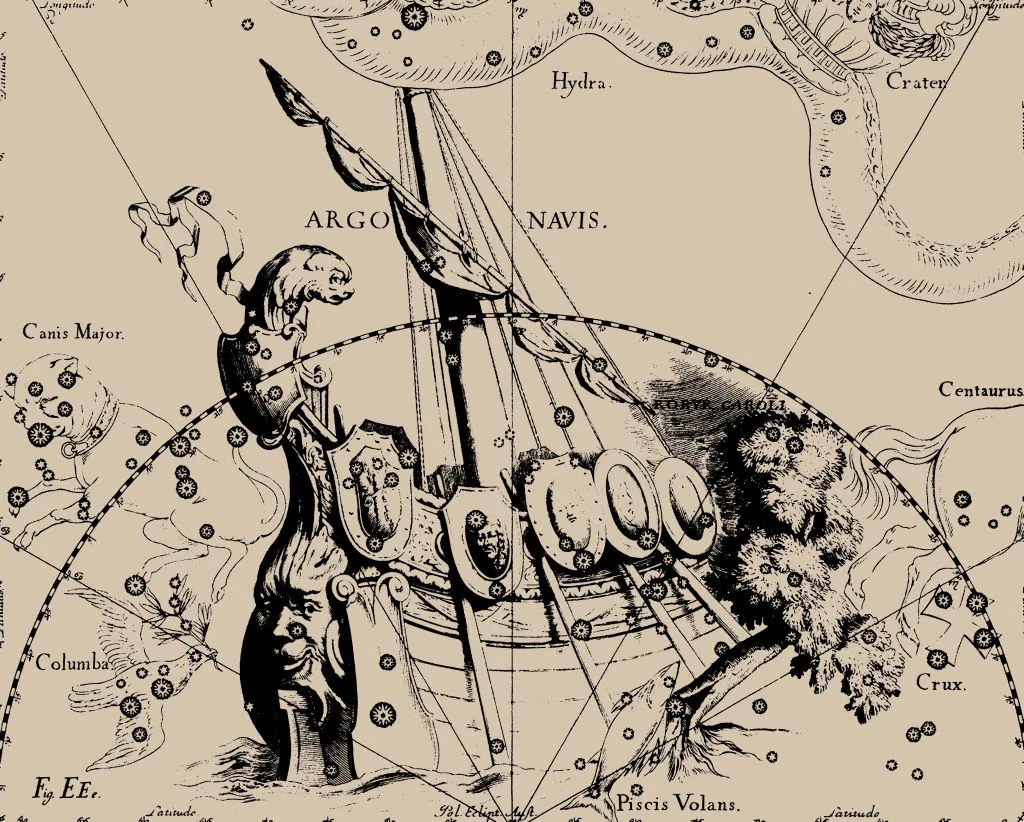
Argo Navis represented the ship in which Jason and the Argonauts sailed in their quest for the Golden Fleece. Large and unwieldy, it was described in 1752 by the French astronomer Nicolas Louis de Lacaille as being "composed of more than 160 easily visible stars". Lacaille divided it into three separate constellations, Vela (the Sails), Puppis (the Poop) and Carina (the Keel), all of which have survived.
Anser /The Goose
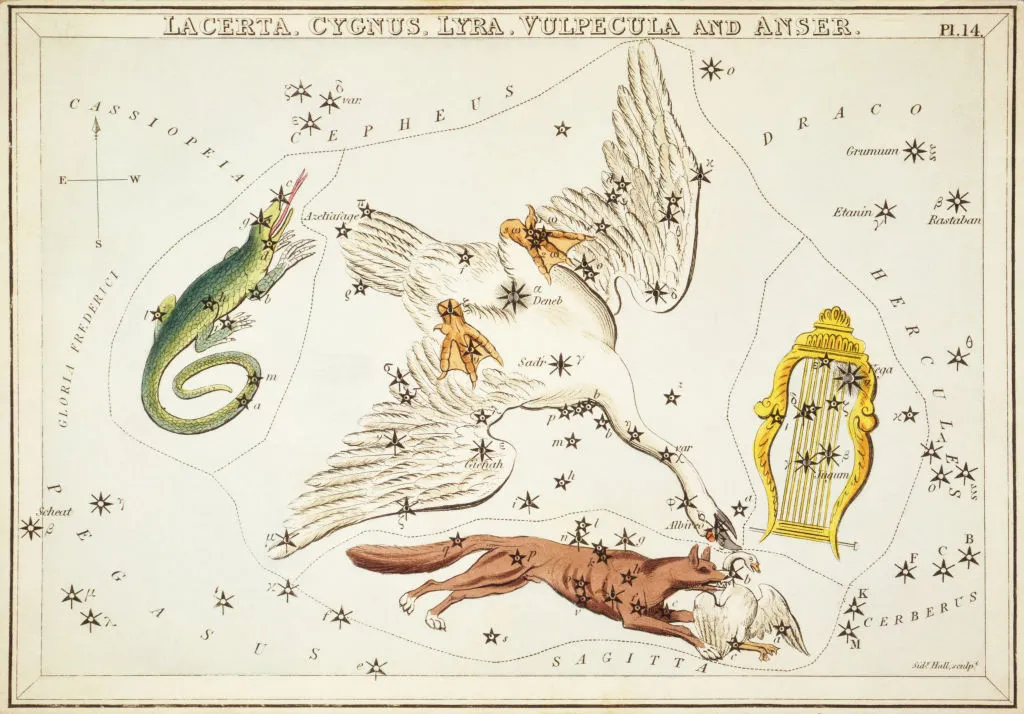
Polish astronomer Johannes Hevelius created 11 constellations. These appeared in his atlas Firmamentum Sobiescianum sive Uranographia in 1687. Many are still in use – including Vulpecula, originally depicted as a fox (Vulpecula) holding a goose (Anser) in its jaws and shown as Vulpecula & Anser on John Flamsteed’s Atlas Coelestis of 1729. The goose is now represented by the star Anser, Alpha Vulpeculae.
Telescopium Herschelii /Herschel’s Telescope
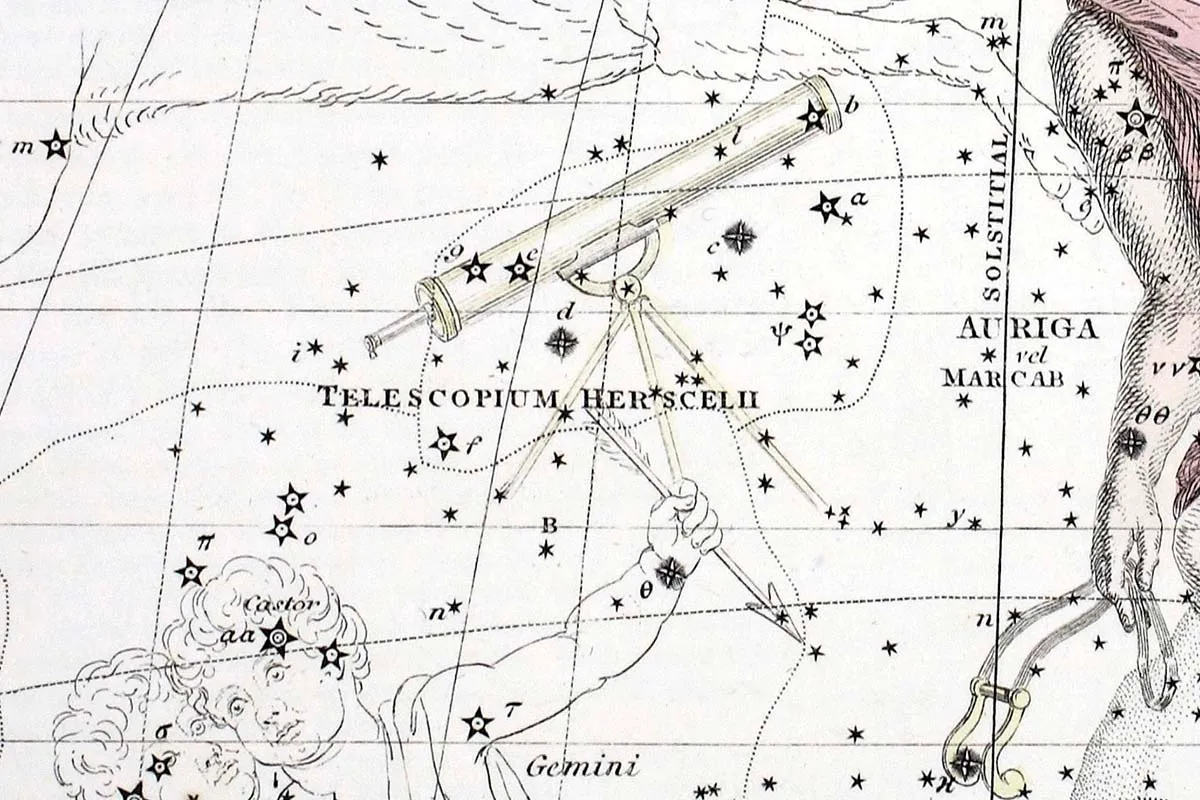
Another creation of Maximilian Hell, this one devised in 1789 to honour William Herschel and his discovery of Uranus. Hell envisaged two telescopes near Auriga: Tubus Hershelii Minor, the 84-inch scope used to discover the planet, and Tubus Hershelii Major, Herschel’s 240-inch instrument. Johann Elert Bode discarded the smaller instrument, showing a single telescope in his Uranographia of 1801.
Turdus Soltarius /The Solitary Thrush

Introduced in 1776 by French astronomer Pierre-Charles Le Monnier as Solitaire, this tiny constellation was located at the end of Hydra’s tail (the constellation whose brightest star is Alphard). The constellation subsequently underwent several name changes, including the Mocking Bird and the Owl. The latter, pictured below, featured in American astronomer Elijah Burritt’s Atlas to the Geography of the Heavens published in 1835.
Harpa Georgii /George’s Harp
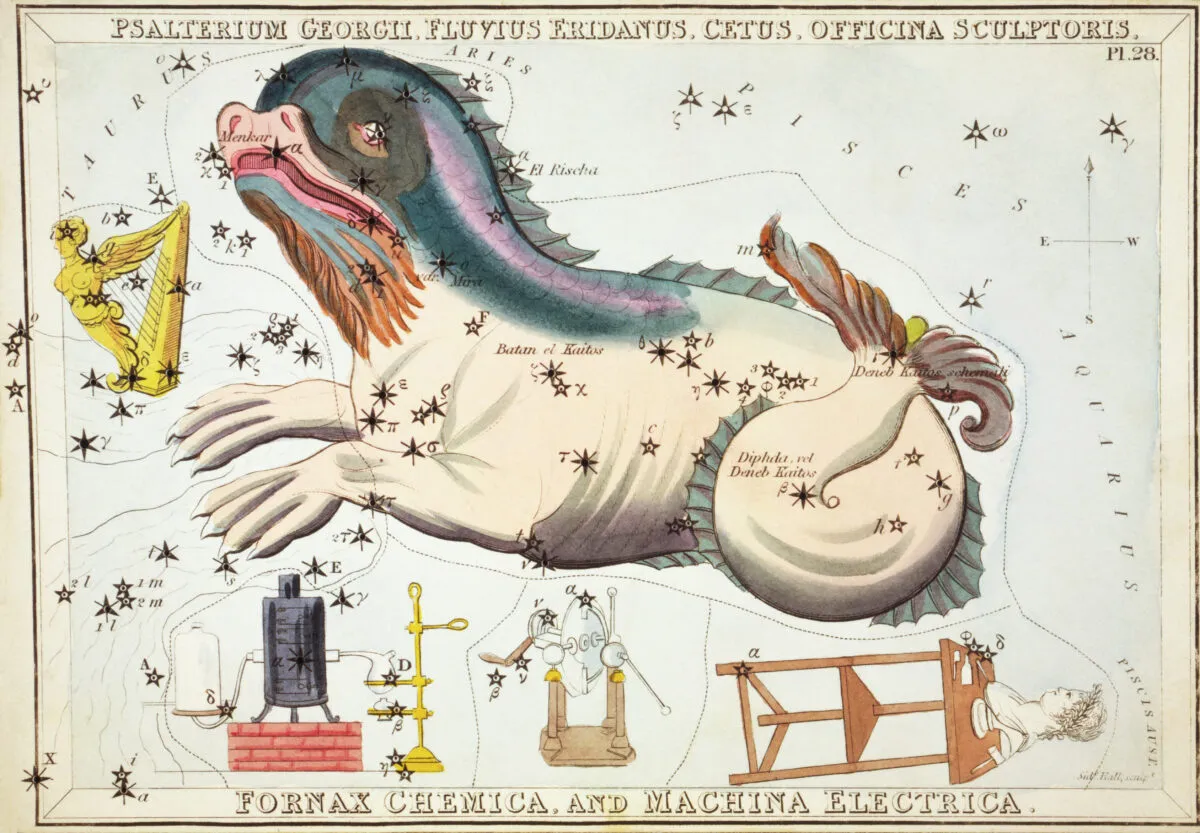
Created by the Jesuit astronomer Maximilian Hell in 1789 and situated in the area of sky between Taurus, Eridanus and Cetus, Psalterium Georgianum (a psaltery is an ancient stringed instrument similar to a harp) honoured King George III, patron of William Herschel. German astronomer Johann Elert Bode depicted the group on his 1801 star atlas Uranographia, changing its name to Harpa Georgii.
Machina Electrica /The Electrical Machine

Located to the south of Cetus, between Fornax and Sculptor, Machina Electrica was comprised of relatively dim stars. It was created by Johann Elert Bode in 1800 and depicted on his 1801 Uranographia. Bode created the constellation to celebrate the electrostatic generator, perhaps emulating Nicolas Louis de Lacaille in devising new constellations depicting scientific instruments.
Officina Typographica /The Printing Shop
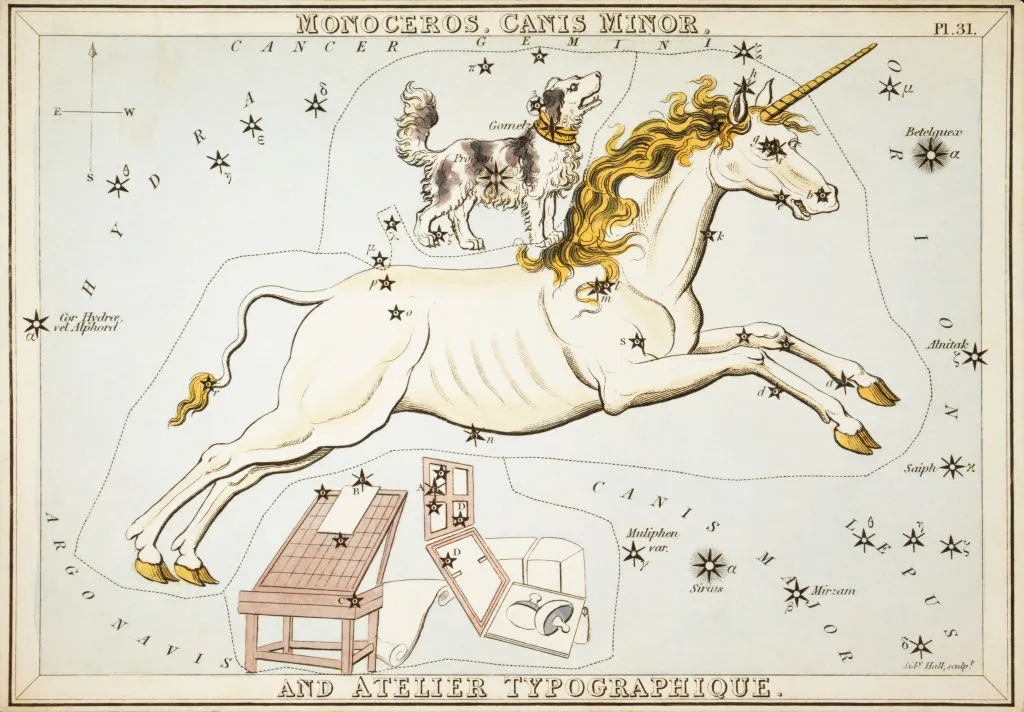
Another of the numerous and now-redundant constellations created by Johann Elert Bode was Officina Typographica, located south of Monoceros and a little way to the east of the star Sirius in Canis Major. Bode introduced the constellation in the 18th century to commemorate the 350th anniversary of the invention of printing with movable type and included it in his Uranographia of 1801.
Tarandus The Reindeer / Custos Messium The Harvest Keeper
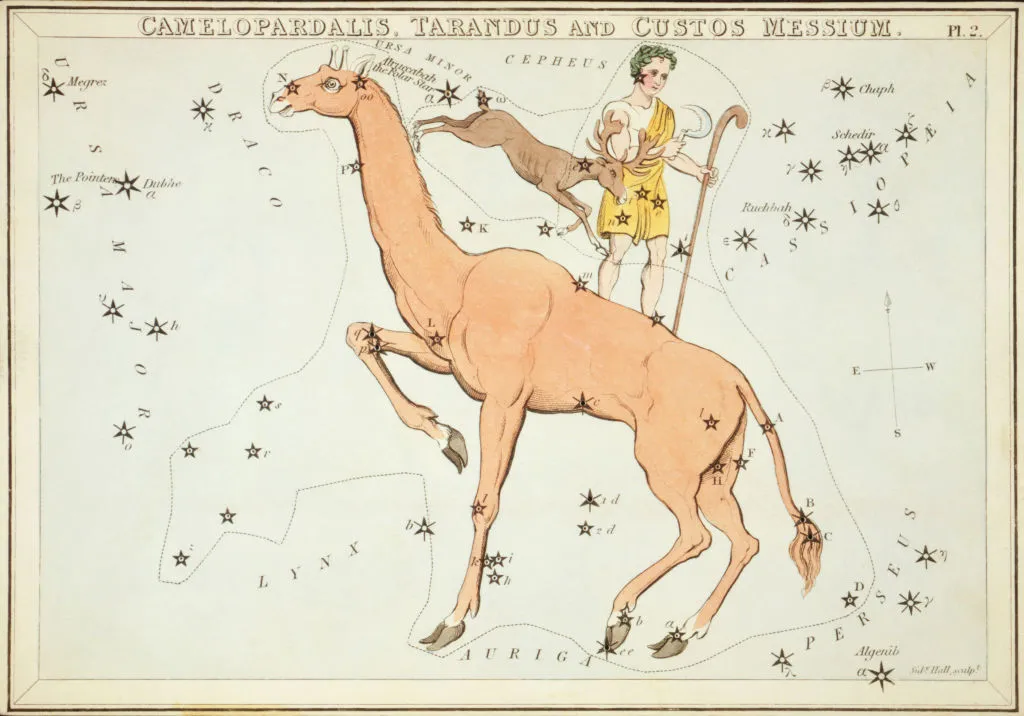
Tarandus, also known as Rangifer, was introduced by Pierre-Charles Le Monnier in 1743 and was located to the north of Camelopardalis. Adjoining Tarandus was Custos Messium, created a few decades later by the French astronomer Joseph-Jerome de Lalande and first appearing in his star atlas of 1779. Custos Messium was occasionally referred to as Messier after the famous comet hunter Charles Messier.
